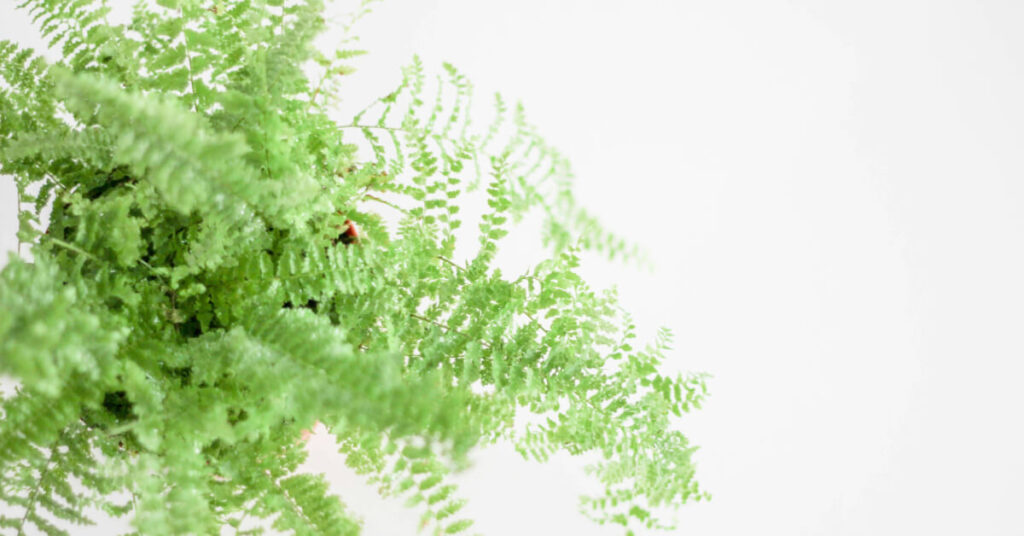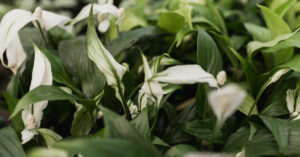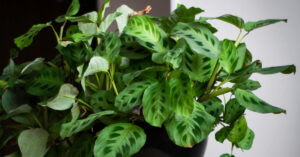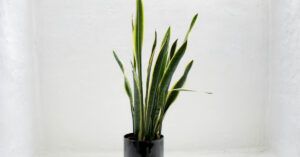Nephrolepis exaltata
Boston Fern stands as the quintessential Victorian houseplant, bringing timeless elegance and lush, tropical beauty to modern homes with its gracefully arching fronds and delicate, feathery texture. This classic beauty transforms any space into a verdant oasis while connecting us to generations of plant lovers who have cherished its romantic, cottage garden appeal and air-purifying benefits.
Why Boston Fern Remains a Beloved Classic
Native to tropical regions worldwide, Nephrolepis exaltata earned its common name and popularity in Boston during the Victorian era, when it graced parlors and conservatories as a symbol of refined taste and natural beauty. Its cascading fronds create instant softness and movement that complements both traditional and contemporary interiors, while its lush growth habit brings the refreshing feeling of a forest floor into indoor spaces.
What makes Boston Fern particularly special is its exceptional air-purifying abilities, recognized by NASA as one of the most effective plants for removing formaldehyde and xylene from indoor air while naturally increasing humidity levels. The plant’s ability to create its own humid microenvironment makes it beneficial for respiratory health, while its graceful presence adds the kind of natural elegance that artificial plants simply cannot replicate.
Care Requirements
Light Requirements
Bright indirect to medium light
Boston Fern thrives in the gentle, filtered light that mimics its natural forest floor habitat. Position your fern near north or east-facing windows where it receives bright, indirect light without harsh direct sun exposure. Morning sunlight is generally acceptable, but avoid hot afternoon rays that can scorch the delicate fronds and cause them to brown and dry out. The plant tolerates medium light conditions but grows more slowly and may become less full in dimmer locations.
Watering
High frequency
Consistent moisture is absolutely crucial for Boston Fern success, as these humidity-loving plants cannot tolerate drought conditions. Water when the top inch of soil feels dry, typically every 3-5 days during the growing season, ensuring the soil remains evenly moist but never waterlogged. Check the soil frequently, especially during warm weather or in heated homes, as ferns dry out more quickly than most houseplants. Never allow the soil to become completely dry, as this can cause permanent damage to the delicate root system.
Soil Type
Well-draining, moisture-retentive potting mix
Use a high-quality potting mix that balances excellent drainage with moisture retention capabilities. Standard indoor potting soil works well when amended with peat moss, coco coir, or compost to improve water-holding capacity. The soil should feel consistently moist after watering but drain excess water freely to prevent root rot. Slightly acidic conditions between 5.5-6.5 pH provide optimal growing conditions for healthy frond development.
Temperature
60-75°F (15-24°C)
Boston Fern prefers cool to moderate temperatures and shows sensitivity to heat stress and sudden temperature changes. Maintain consistent temperatures between 60-75°F for optimal growth, avoiding locations near heating vents, fireplaces, or other heat sources that create hot, dry conditions. The plant tolerates brief temperature dips into the mid-50s but suffers in temperatures above 80°F, especially when combined with low humidity.
Humidity
High
High humidity is absolutely essential for Boston Fern health and beauty, requiring a minimum of 40-50% relative humidity with 50-80% being ideal. Increase humidity using humidifiers, grouping plants together, or placing on pebble trays filled with water. Regular misting helps but should supplement, not replace, other humidity-increasing methods. Low humidity quickly causes brown, crispy frond tips and overall decline in plant health.
Fertilizing
Regular feeding during growing season
Boston Fern benefits from consistent, gentle nutrition during its active growing period from spring through early fall. Apply a balanced liquid fertilizer monthly, diluted to half strength to prevent root burn that can damage the sensitive root system. The plant responds well to organic fertilizers like fish emulsion or compost tea, which provide gentle, sustained nutrition. Reduce or eliminate feeding during fall and winter when growth naturally slows.
Seasonal Care Adjustments
Spring/Summer (Growing Season):
- Water every 3-5 days maintaining consistent moisture
- Monthly fertilizing promotes lush frond development
- Monitor humidity levels closely as warm weather increases water needs
- Ideal time for repotting and dividing overcrowded plants
Fall/Winter (Slower Growth):
- Reduce watering frequency slightly as growth slows
- Stop or significantly reduce fertilizing
- Pay extra attention to humidity as heated indoor air becomes drier
- Growth naturally decreases—this is completely normal
Mature Size and Growth Habits
Boston Fern can reach impressive proportions when given proper care, with fronds extending 2-3 feet long and creating plants 3-4 feet wide. The plant grows from a central crown, producing new fronds throughout the growing season that unfurl in the characteristic fiddlehead pattern. Individual fronds typically live 6-12 months before naturally yellowing and declining, with new growth constantly replacing older foliage. With proper care, Boston Ferns can live for many years, often becoming spectacular specimen plants that serve as living focal points.
Difficulty Level
Moderate
Boston Fern requires more consistent attention than low-maintenance plants, particularly regarding moisture and humidity levels. However, it rewards attentive care with spectacular lush growth and provides clear feedback about its needs through frond appearance.
Pet and Child Safety
Good News: Boston Fern is non-toxic to pets and children, making it an excellent choice for households with curious animals and small children. The plant poses no threat if nibbled or handled, though the delicate fronds can be easily damaged by rough handling or pet interference.
Varieties to Consider
While the classic Boston Fern remains most popular, several varieties offer unique characteristics and growth habits:
- Nephrolepis exaltata ‘Bostoniensis’: The classic variety with gracefully arching fronds
- Nephrolepis exaltata ‘Fluffy Ruffles’: Compact variety with ruffled, textured fronds
- Nephrolepis exaltata ‘Tiger Fern’: Striped fronds with yellow and green variegation
- Nephrolepis exaltata ‘Macho Fern’: Large, robust variety perfect for substantial displays
- Nephrolepis exaltata ‘Compacta’: Dwarf variety ideal for smaller spaces and tabletops
Plants That Pair Well with Boston Fern
Boston Fern’s lush, tropical appearance and humidity requirements make it an excellent companion for other moisture-loving plants. Its soft, textural fronds provide beautiful contrast while creating beneficial humid microclimates.
Perfect Companions:
- Peace Lily – Similar humidity needs with complementary white flowers
- Chinese Evergreen – Comparable moisture requirements with colorful foliage contrast
- Pothos varieties – Similar care needs with different growth habits
- Prayer Plant (Maranta) – Fellow humidity-lover with patterned foliage
- Baby’s Tears – Creates lush groundcover effect in grouped plantings
Tropical Collections: Create stunning, jungle-like displays by combining Boston Fern with other humidity-loving plants like peace lilies, prayer plants, and tropical begonias. These combinations naturally increase ambient humidity while creating cohesive, lush environments.
Aesthetic Pairings: Boston Fern serves as an excellent textural element, softening hard edges and adding movement to plant groupings. Its cascading habit works beautifully with upright plants like snake plants or dracaenas, creating dynamic displays with varying heights and textures.
Common Problems and Solutions
Low Humidity
Symptoms: Brown, crispy frond tips, yellowing fronds, stunted growth, pest susceptibility
Solution: Increase humidity with humidifiers, pebble trays, or plant groupings
Overwatering
Symptoms: Yellow fronds, mushy crown, root rot, fungal problems, moldy soil
Solution: Improve drainage, reduce watering frequency, ensure proper air circulation
Underwatering
Symptoms: Wilting fronds, brown crispy edges, dry soil, frond drop
Solution: Increase watering frequency and establish consistent moisture levels
Too Much Direct Light
Symptoms: Scorched fronds with brown patches, faded color, crispy texture
Solution: Move to location with bright, indirect light
Pest Issues
Symptoms: Scale insects, mealybugs, spider mites (common in low humidity)
Solution: Increase humidity, improve air circulation, treat with insecticidal soap
Creating Optimal Humidity
Maintaining proper humidity is crucial for Boston Fern success and requires attention to several strategies that work together effectively.
Humidifier Usage: The most reliable method for maintaining consistent humidity levels, especially during winter months when indoor air becomes particularly dry from heating systems.
Pebble Trays: Fill shallow trays with pebbles and water, placing the plant pot on top. As water evaporates, it increases local humidity around the plant.
Plant Groupings: Clustering humidity-loving plants together creates beneficial microclimates where plants help maintain moisture levels for each other through transpiration.
Bathroom Placement: Naturally humid spaces like bathrooms with adequate light provide ideal conditions, especially if they receive gentle morning light.
Regular Misting: Light, frequent misting helps but should supplement other humidity methods rather than serving as the primary source of moisture.
Propagation
Boston Fern propagation is straightforward through division, making it easy to create new plants or refresh older specimens:
Division Method:
- Remove plant from pot during spring repotting
- Gently separate natural divisions with roots attached
- Each division should have several fronds and healthy root system
- Plant divisions in fresh, moisture-retentive potting soil
- Keep consistently moist in bright, indirect light
- Maintain high humidity until new growth indicates establishment
Runner Propagation:
- Look for small plantlets (runners) that develop around the parent plant
- Allow runners to develop their own root systems while attached
- Once well-rooted, carefully separate and pot individually
- Treat as mature plants with consistent moisture and high humidity
Your Gateway to Lush Indoor Gardening
Boston Fern represents the perfect introduction to humidity-loving plants, offering spectacular beauty and air-purifying benefits for those ready to embrace more attentive plant care. Its timeless elegance and lush growth create the kind of natural luxury that transforms ordinary spaces into verdant retreats, while its non-toxic nature makes it safe for family homes.
Whether you’re seeking to add romantic, Victorian charm to your décor or create a lush, tropical atmosphere, Boston Fern delivers unmatched textural beauty and natural grace. Start with this classic beauty, and you’ll discover the satisfaction that comes from nurturing a plant that responds to consistent care with spectacular, ever-changing displays of emerald elegance.




